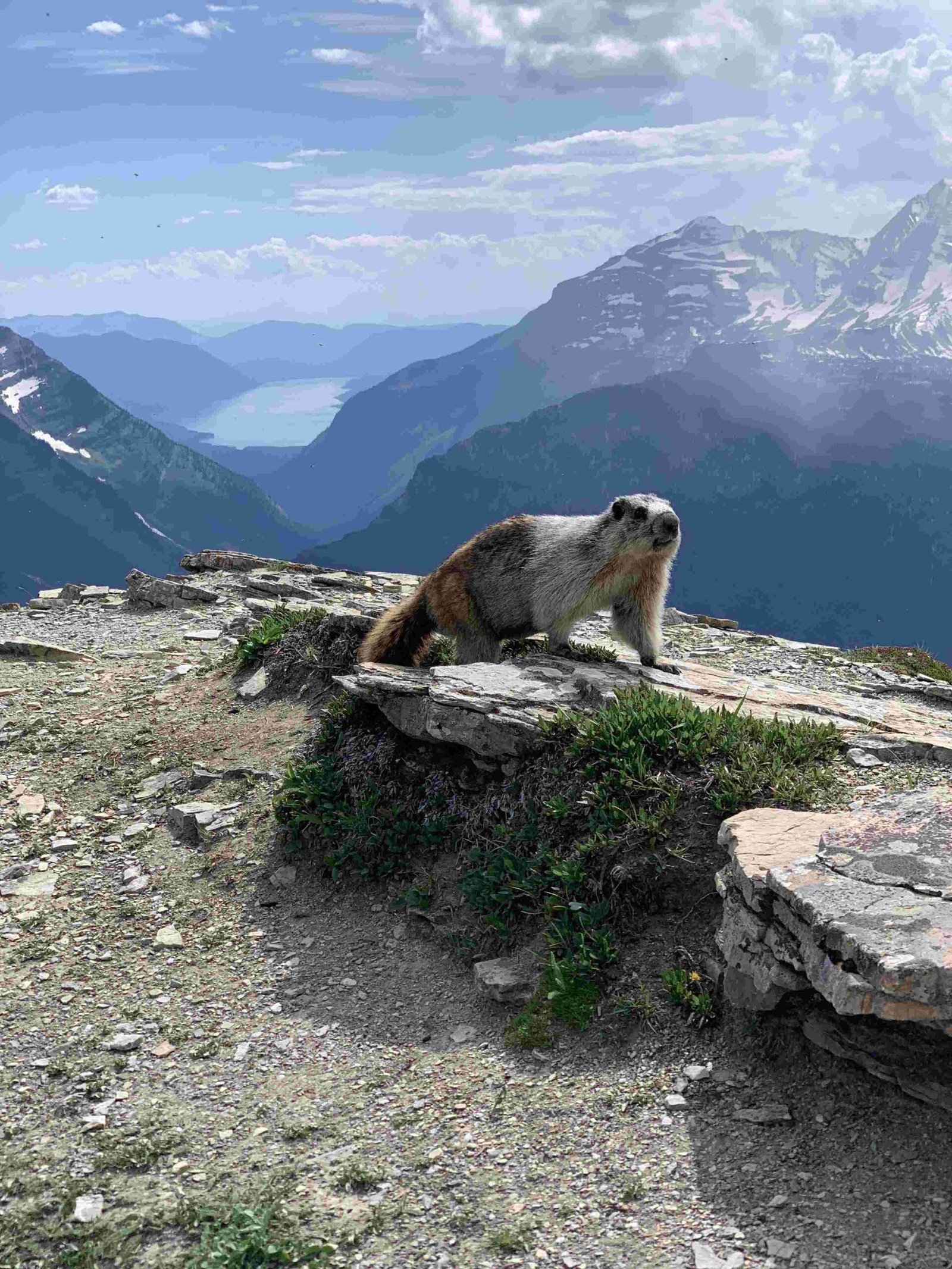Stromatolite fossils in Glacier National Park offer a fascinating glimpse into Earth’s ancient past. These remarkable structures, formed by microscopic organisms over a billion years ago, can be found in various locations throughout the park. From the accessible Going-to-the-Sun Road to the more remote Snowslip Mountain, these fossils provide valuable insights into early life and the geological history of the region.
Where Can Stromatolite Fossils Be Found in Glacier National Park?

Stromatolite fossils can be observed in several key locations within Glacier National Park:
- Logan Pass and Going-to-the-Sun Road
- Accessible by car or on foot
-
GPS: 48.6953° N, 113.7353° W
-
Grinnell Glacier
- Reached via hiking trails
-
GPS: 48.7633° N, 113.7267° W
-
Altyn Limestone near Apikuni Falls
- Located in Swiftcurrent Valley
-
GPS: 48.7917° N, 113.6167° W
-
Snowslip Mountain and Mount Shields
- Less accessible, requires strenuous hiking
-
GPS: 48.275° N, 113.5167° W
-
Highline Trail and Granite Park Chalet
- Accessible via hiking trails
- GPS: 48.7833° N, 113.7333° W
How Did Stromatolite Fossils Form in Glacier National Park?

The formation of stromatolite fossils in Glacier National Park is a fascinating process that occurred over millions of years:
- Environmental Conditions:
- Shallow marine environment (ancient Belt Sea)
-
Covered parts of eastern Washington, northern Idaho, western Montana, and nearby Canadian areas
-
Timeframe:
- Precambrian era, specifically Mesoproterozoic period
-
Approximately 1.35 to 1.45 billion years ago
-
Formation Process:
- Blue-green algae (cyanobacteria) formed small clumps
- Algae trapped sediments in water
- New layers of algae grew on top of trapped sediments
-
Process repeated, creating layered structures
-
Geological Events:
- Stromatolites were buried and compressed into rock
- Exposed during Rocky Mountain formation (70-80 million years ago)
- Further revealed by recent glacial activity
What Do Stromatolite Fossils Look Like?
Identifying stromatolite fossils in Glacier National Park requires attention to specific visual characteristics:
| Characteristic | Description |
|---|---|
| Shape | Mound-shaped, conical, or dome-shaped |
| Appearance | Resembles sliced cabbage, cross-section of a jawbreaker, or swirls of water |
| Layers | Visible as alternating green and pink sediments |
| Size | Varies from 0.3-1.2 meters (Grinnell Formation) to 15-20 feet (Helena limestone) in diameter |
Key features to look for:
– Layered structure
– Presence of trapped sediments
– Distinct from fossil algae (lack of recognizable organic microstructures)
Why Are Stromatolite Fossils Important in Glacier National Park?
Stromatolite fossils hold significant importance in Glacier National Park’s geological context:
- Ancient Ecosystems:
- Provide insights into early marine life
-
Represent some of the oldest forms of photosynthetic organisms
-
Atmospheric Evolution:
- Contributed to Earth’s oxygenation
-
Played a crucial role in carbon cycling
-
Scientific Research:
- Enhance understanding of Precambrian life
-
Contribute to paleontological studies of the region
-
Geological History:
- Offer clues about the park’s ancient marine environment
- Help reconstruct the geological timeline of the area
How Can Visitors Responsibly Observe Stromatolite Fossils?
When visiting Glacier National Park to observe stromatolite fossils, it’s crucial to follow responsible practices:
- Stay on Designated Trails:
- Protect fragile ecosystems
-
Ensure personal safety
-
Leave No Trace:
- Do not remove or disturb fossils
-
Take only photographs, leave only footprints
-
Use Proper Equipment:
- Wear sturdy hiking boots
-
Bring binoculars for distant observations
-
Educate Yourself:
- Attend ranger-led programs
-
Visit park visitor centers for information
-
Report Findings:
- Inform park staff of any new fossil discoveries
- Contribute to ongoing research efforts
What Other Geological Features Accompany Stromatolite Fossils?
Stromatolite fossils in Glacier National Park are often found alongside other interesting geological features:
- Sedimentary Rock Layers:
- Provide context for stromatolite formation
-
Reveal ancient environmental conditions
-
Glacial Features:
- U-shaped valleys
-
Cirques and moraines
-
Metamorphic Rocks:
- Showcase geological processes over time
-
Offer contrast to sedimentary stromatolite-bearing layers
-
Tectonic Structures:
- Faults and folds
- Evidence of mountain-building processes
How Have Stromatolite Fossils Contributed to Scientific Understanding?
Stromatolite fossils in Glacier National Park have significantly advanced scientific knowledge:
- Early Life Studies:
- Provide evidence of Earth’s earliest ecosystems
-
Help reconstruct ancient environmental conditions
-
Evolutionary Biology:
- Offer insights into the development of photosynthetic organisms
-
Contribute to understanding of microbial mat communities
-
Geological Dating:
- Serve as important markers for Precambrian time periods
-
Aid in correlating rock formations across regions
-
Climate Change Research:
- Provide data on ancient atmospheric compositions
-
Help model long-term climate patterns
-
Astrobiology:
- Inform search for potential life on other planets
- Serve as analogs for extraterrestrial microbial structures
What Challenges Face Stromatolite Fossil Preservation in Glacier National Park?
Preserving stromatolite fossils in Glacier National Park presents several challenges:
- Natural Erosion:
- Weathering processes can damage exposed fossils
-
Glacial retreat may reveal new specimens but also increase erosion risks
-
Human Impact:
- Increased visitation can lead to accidental damage
-
Illegal fossil collection threatens site integrity
-
Climate Change:
- Altering weather patterns may accelerate erosion
-
Changing vegetation could obscure fossil sites
-
Resource Allocation:
- Limited funding for comprehensive fossil surveys
-
Balancing preservation with other park management priorities
-
Educational Challenges:
- Communicating the importance of fossils to visitors
- Encouraging responsible observation practices
By addressing these challenges, Glacier National Park can continue to protect and showcase its remarkable stromatolite fossils for future generations to study and appreciate.
References:
1. Stromatolites of the Belt Series in Glacier National Park and Vicinity
2. Stratotype Inventory—Glacier National Park, Montana
3. The Stromatolites of Glacier National Park